

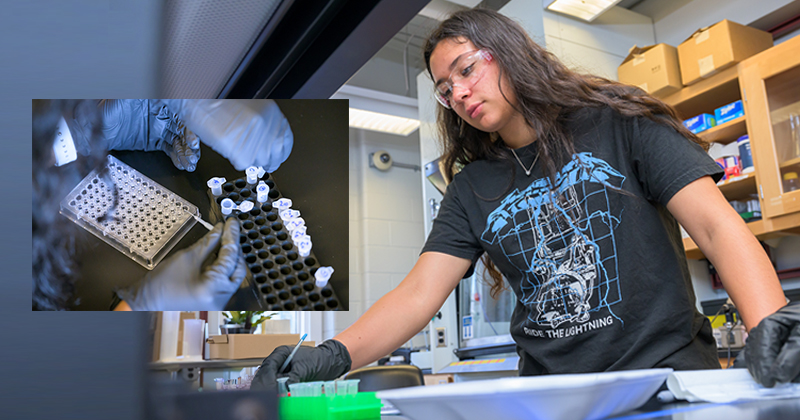
Forging STEM’S next generation
Photos by Evan Krape and Courtesy of John Jungck August 15, 2024
Inaugural summer outreach program hosted by UD’s Center for Hybrid, Active, and Responsive Materials (CHARM) provides local high school students, teachers with hands-on experience across a variety of STEM fields.
From adapting to climate change to finding new therapies for difficult-to-treat diseases, addressing the challenges facing society requires a workforce that’s adequately trained in science, technology, engineering and mathematics (STEM).
Not only has the demand for jobs that require STEM expertise grown in recent years, there’s also been an increased awareness of the importance of that workforce being diverse so that the world of tomorrow is more just and equitable. But recent data suggests that many underrepresented minorities still only represent a small portion of the entire U.S. STEM workforce.
To provide underrepresented students with a unique opportunity to learn first-hand what being a scientist and engineer is all about, the University of Delaware’s Center for Hybrid, Active, and Responsive Materials (CHARM) hosted its inaugural summer outreach program. Known as Foundations for Outreach and Recruitment of Great Engineers & Scientists (FORGES), the seven-week summer program provides students from underrepresented populations with exposure to a variety of STEM fields and career paths. The program also welcomed high school science teachers to participate, enabling them to take unique teaching strategies back to the classroom.
At the center of innovation, education and diversity
CHARM, one of 20 National Science Foundation-funded Materials Research Science and Engineering Centers (MRSEC), is not only a hub of materials science research, it is also a research center that’s committed to training the next generation of innovators with its focus on diversity and educational programming.
CHARM executive director Gwen Gregory explained that while the center has hosted outreach events and high school internships in the past, the FORGES program came about as a way to reach more high school students and their teachers while also bolstering UD and CHARM’s connections with the local community.
“The goal of FORGES is to provide an opportunity for high school students to gain experience in a lab setting and exposure to a variety of pathways in STEM research–especially students who are from underrepresented populations in STEM who may not have gotten the experience or exposure otherwise,” added Allie Landry, CHARM’s new education director who is responsible for developing and coordinating education and outreach opportunities for K-12 and undergraduate students.
While developing this new program, Gregory connected with John Jungck, Professor of Biological Sciences and Mathematical Sciences, and retired professor Jon Manon, both of whom had experience with leading teacher-facing outreach events.
“We proposed a methodology for recruiting students by reaching out to STEM teachers with whom we have worked in the past,” explained Jungck and Manon. “It was important that the small cohort of students from local high schools attend the FORGES sessions together with their teachers so that the teacher could act as both a discipline-specific mentor during the summer sessions but then also maintain a generative connection to the students upon returning to their high schools in the fall.”
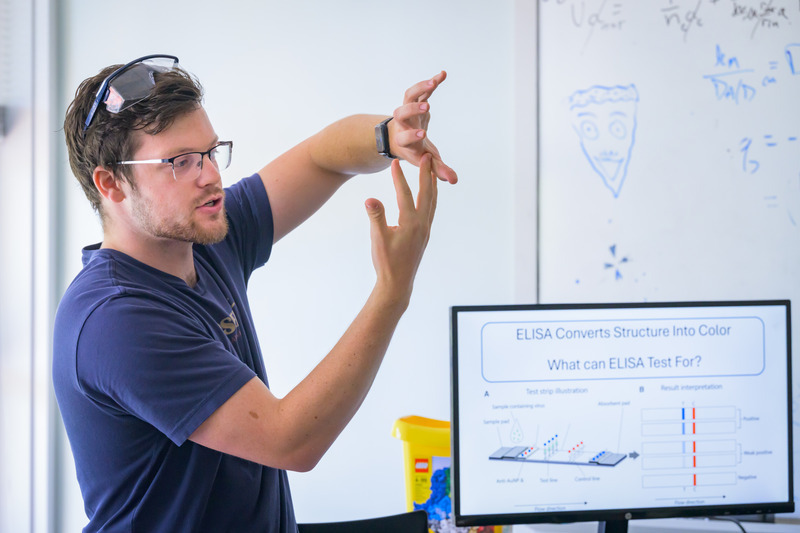
Learning and working together across disciplines
This summer, CHARM welcomed eight high school students and three teachers from St. Elizabeth High School, Middletown High School, and William Penn High School to campus, where they spent time at four different departments across campus: Chemistry and Biochemistry and Biological Sciences in the College of Arts and Sciences as well as Chemical and Biomolecular Engineering and Materials Science and Engineering in the College of Engineering. Program participants also visited the Chemours Discovery Hub and ChristianaCare’s Gene Editing Institute.
Each day began with a visit to FORGES’ “home base” at Harker Interdisciplinary Science and Engineering Laboratory (ISE Lab). Here, students and their teachers completed an interdisciplinary hands-on activity, one that involved both math and science, with Jungck, Landry and Manon. “An important goal was for them to experience working together with the other members of the team to develop a problem-solving community,” said Jungck and Manon.
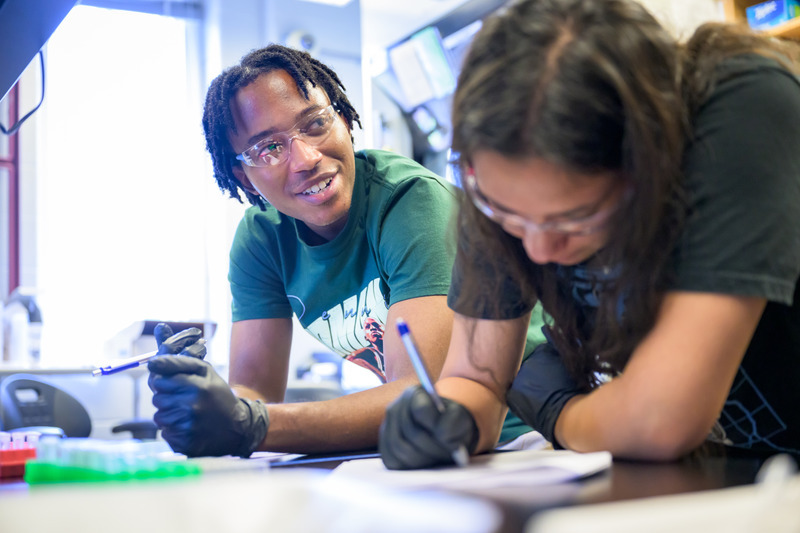
Then, during the afternoon’s tours, students got to participate in a wide range of activities and experiments related to each place they visited–from making a mock battery in Chemours’ fuel cell lab, studying viral protein structure using augmented reality, conducting a mock disease test by looking for antigens, getting up close with sea urchins, and learning about how CRISPR can be used to treat infections.
“I think the program went very well in terms of providing students exposure to a variety of laboratory and industrial settings,” said Middletown science teacher Matt Juck. “The students were also able to engage in hand-on laboratory experiences within a wide range of science content areas.”
FORGES was also set up to allow the high school students to network with their peers and attend workshops hosted by CHARM and CPI’s joint Research Experience for Undergraduate program. At the end of the program, students attended the CHARM/CPI research showcase and presented a small “capstone” project alongside undergraduate researchers
“My favorite experience was doing fun experiments, like making boba, and learning about STEM and STEM careers from professionals in the field,” said Devyanshi Sharma, a rising senior at Middletown High School.
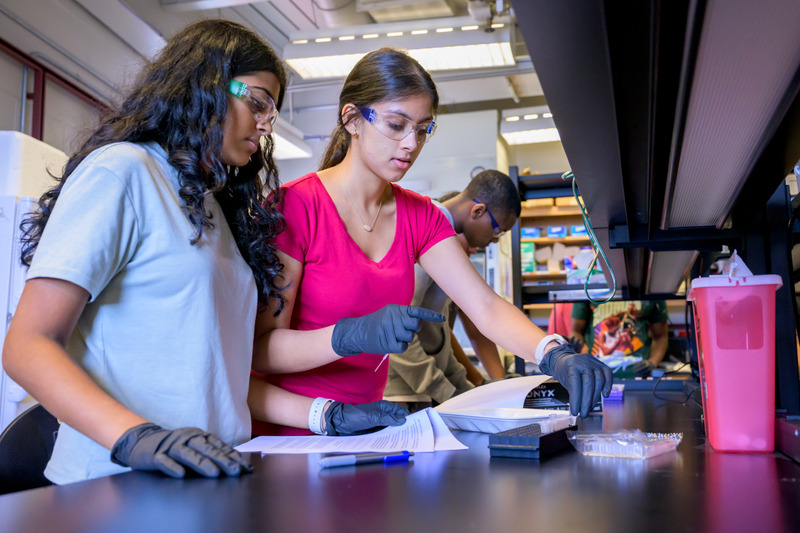
“Hands-on, minds-on”
CHARM plans to continue FORGES next year, taking in learnings and feedback from its inaugural summer while hoping to expand the program so it can reach even more students and include more academic departments and areas of study in the future.
“I think my students hope to expand their knowledge base in terms of the interdisciplinary applications of science, math, computer science, and engineering,” Juck said about the impacts of this program for his students. “I think that FORGES has allowed them to see themselves venturing into college majors or future careers that link with their interest in ways that they may not have thought about before.”
Jungck and Manon both hope that this program can also provide high school science teachers with new ideas for how to incorporate “hands-on, minds-on interdisciplinary activities” that instill a sense of wonder about science in their classrooms. “An overarching goal for FORGES has been to model a variety of examples of active learning with the hope that both students and teachers would take away the importance of having everyone fully engaged in a problem-based learning community,” they added.
“Along with our ongoing outreach and educational activities here at CHARM, FORGES is all about institutional transformation,” added Gregory about what FORGES represents for CHARM as a research center. “This is thanks to a combination of stronger outreach programs, connecting with community and industry partners, and fostering networking opportunities across academic departments here at UD.”
Landry enjoyed seeing the students become increasingly engaged with the materials as the program progressed and is excited for what the future holds for FORGES. “I hope each student was able to find something that sparked their interest in a new area of STEM that they might not have considered before,” she added. “I also hope each student leaves with a better sense of the opportunities and pathways in STEM research and careers.”
Shil Shah, a rising senior at Middletown High School seemed to agree. “During my FORGES experience, I got to experience working in a professional lab setting,” she said. “This has given me valuable experience that I will carry with me through my future STEM careers.”
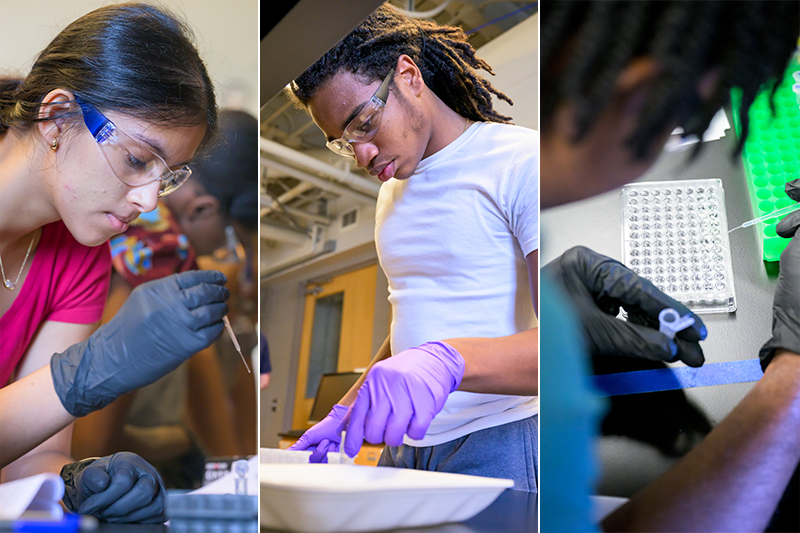
Additional reporting contributed by Hilary Douwes.
Contact Us
Have a UDaily story idea?
Contact us at ocm@udel.edu
Members of the press
Contact us at mediarelations@udel.edu or visit the Media Relations website

